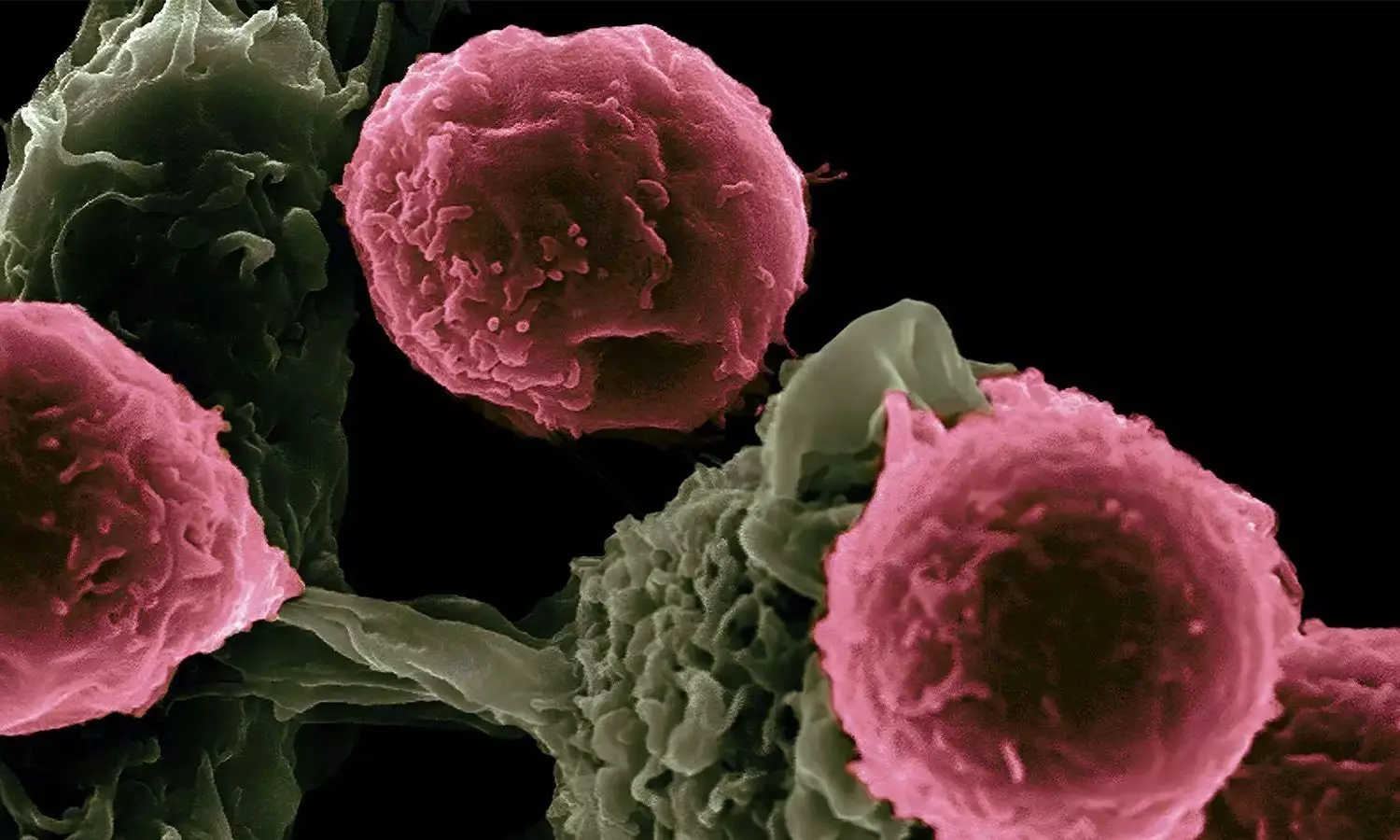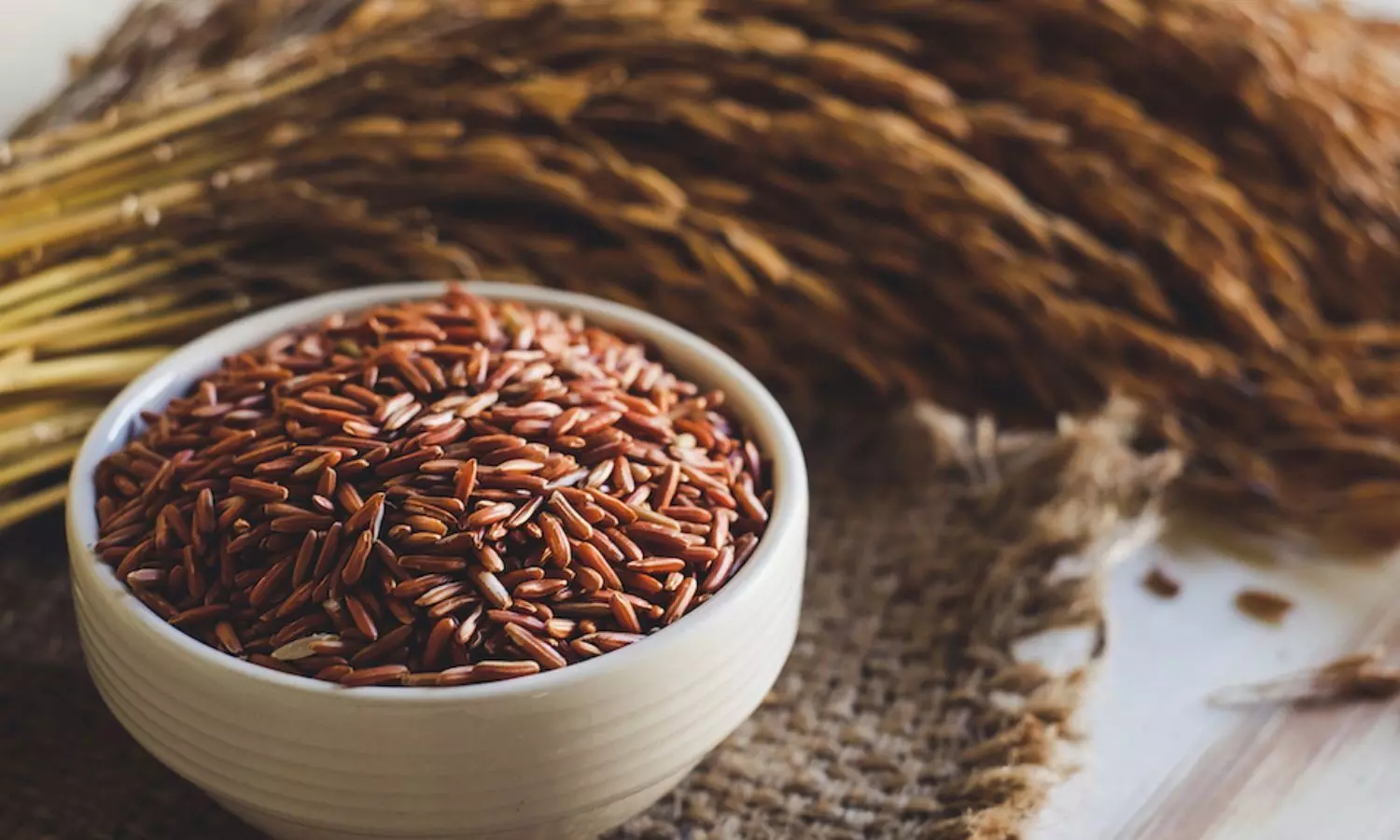Standardized preoperative, surgical, antibiotic practices improve orthopedic, colorectal, abdominal surgery outcomes
Powered by WPeMatico
Powered by WPeMatico
Powered by WPeMatico
Powered by WPeMatico
Powered by WPeMatico

Hyderabad: Aurigene Pharmaceutical Services Limited, a Dr Reddy’s Laboratories Limited company, inaugurated its biologics facility spread across 70,000 sq.ft. in Genome Valley, a bio cluster, located in Hyderabad, India.
The facility is designed to serve customers with process & analytical development and small scale manufacturing of antibodies and other recombinant proteins for preclinical and early phase clinical requirements, as per the Company.
The process and analytical development laboratories are now operational while the commissioning of manufacturing capacity will be completed later in 2024.
According to the Company’s release, the state-of-the-art facility is equipped with best-in-class equipment and control systems, supported by an experienced talent pool that will ensure seamless transfer to large-scale commercial CGMP manufacturing facilities. The new facility is complementary to the company’s current discovery capabilities and infrastructure, which primarily focuses on recombinant proteins including mAbs, bi- and multi-specifics, immune-fusion molecules, antibody drug conjugates and other complex proteins.
Aurigene’s comprehensive end-to-end service offering now delivers solutions from, discovery through large-scale commercial manufacturing from three proximally located campuses (discovery, process development/clinical manufacture and large scale commercial manufacture). The newly opened Genome Valley facility will deliver compliant and economically viable cell lines, process development solutions and supporting analytical methods in support of customers seeking to rapidly enter and progress through clinical development.
“The opening of this latest facility is one of multiple strategic initiatives that Aurigene is implementing to support rapid growth in both the small molecule and biologics spaces, as illustrated by recent announcements related to AI/ML-led drug discovery in small molecules and a collaboration with Vipergen, a DNA-encoded library (DEL) technologies service provider,” the release stated.
Akhil Ravi, CEO, Aurigene, commented, “The journey started a year back when we decided to invest in creating the facility. It is great to see the facility operational and the addition of this capacity and capabilities shows our firm commitment to the continued expansion of our biologics business, building on 25 years of proven experience. The state-of-the-art facility will enable us to service our global customers efficiently and support in the development of innovative medicine.”
Dr. Roger Lias, Global Commercial Head – Biologics, Aurigene, added, “There are very few global CDMOs that can truly support customers ‘end-to-end’ from discovery services to large scale commercial manufacture of both Drug Substance and Drug Product. Our new facility further strengthens Aurigene’s capabilities and builds on our technical excellence, demonstrated global compliance and state-of-the-art facilities as companies from start-up biotechs to global multinationals continue to strengthen their supply chains and seek economically viable support for both their development portfolios and marketed products.”
Read also: Dr Reddy’s Labs names Milan Kalawadia as CEO, North America
Powered by WPeMatico

Kozhikode: Following the suspension of a government doctor at Kozhikode Medical College Hospital (MCH) for allegedly conducting surgery on a four-year-old girl’s tongue instead of her finger, the five-member Medical board constituted under the direction of Health Minister Veena George found negligence on the part of the doctor.
Conducting a detailed enquiry into the case, the board cross-referenced various documents such as treatment records, duty registers, statements provided to the police by the staff on duty, and the FIR filed by the police. Based on their inquiry, they confirmed the doctor’s accusation of medical negligence to be true.
Following this, the board handed over the report to the police on Saturday for further investigation and a chargesheet will be filed against the doctor soon. The medical board consists of five members including a police surgeon with the District Medical Officer serving as the head.
Also read- Kerala Shocker: Doctor Performs Surgery On Tongue Instead Of Finger! Suspended
Medical Dialogues team had earlier reported the incident where the doctor working in the post of Associate Professor was suspended by the State Government for allegedly conducting surgery on a four-year-old girl’s tongue instead of her finger.
The little girl was taken to the operating theatre at the Government Medical College Hospital for the removal of her sixth finger. However, hours later, when she emerged from the surgery, it was discovered that the operation was performed on her tongue ‘mistakenly’.
Apart from being suspended by State Health Minister Veena George, the treating doctor was also booked under Indian Penal Code (IPC) Sections 336 (endangering the life or personal safety of others) and 337.
After realising his mistake, the treating doctor reportedly apologized to them saying that it was a mistake on his part. Immediately, he performed another surgery to remove the sixth finger. However, The parents of the child further filed a case of medical negligence claiming their consent was not sought for the operation on the tongue.
Earlier the police had also confirmed that the doctor operated on the tongue instead of the child’s finger.
Medical College Assistant Commissioner of Police KE Premachandran told Onmanorama, “The report confirms the negligence on the part of the duty doctor. Also, it reiterates the police team’s findings. We will file a charge sheet against the doctor.”
Powered by WPeMatico

Semaglutide improved taste sensitivity, changed gene expression in the tongue that’s responsible for taste perception, and changed the brain’s response to sweet tastes, according to research presented Saturday at ENDO 2024, the Endocrine Society’s annual meeting in Boston, Mass.
“People with obesity often perceive tastes less ‘intensely,’ and they have an inherently elevated desire for sweet and energy-dense food,” said Mojca Jensterle Sever, Ph.D., of the University Medical Centre in Ljubljana, Slovenia.
Jensterle Sever and colleagues designed a proof-of-concept study on the impact of GLP-1 receptor agonist (GLP-1RA) semaglutide on taste perception. They randomly assigned a sample of 30 women with an average 36.4 BMI to either semaglutide 1 mg or placebo.
“Our findings build upon preliminary animal studies showing that central administration of GLP-1RA medications impacts taste aversion to sweetness,” Jensterle Sever said.
For 16 weeks, the researchers measured their taste sensitivity using strips containing different concentrations of four basic tastes. They used functional MRI to measure brain responses to a sweet solution dripping onto the tongue before and after the women ate a standard meal. They also administered a tongue biopsy to evaluate the participants’ mRNA expression in the collected tongue tissue.
Those in the treatment group experienced changes in taste perception, taste bud gene expression and brain activity in response to sweet taste stimuli.
The genes EYA, PRMT8, CRLF1, and CYP1B1, which exhibited differential mRNA expression in all the tests in the analysis, are connected to our taste pathways, neural plasticity, and the renewal of taste buds in the tongue.
The study also revealed insights into the brain’s response to the GLP-1 receptor, particularly in the angular gyrus-a part of the brain that influences language and number processing, memory and reasoning.
This shift in a person’s concept of reward compared with neutral feelings toward taste could have significance for understanding and potentially adjusting taste preferences in people with obesity.
“The general public will be interested to learn of the potential novel effects of this popular therapeutic class widely used for the treatment of diabetes and obesity,” Jensterle Sever said. “Clinicians will likely correlate the findings with reports from their patients on changes in desire for certain foods, which go beyond broad changes in appetite and satiety that help them lose weight.”
Jensterle Sever expanded on some of the study’s limitations adding, “This proof-of-concept study assessed only a specific taste in a study environment, which may not reflect everyday experience. Taste perception can vary significantly from person to person, limiting the generalizability of our results. Additionally, mRNA sequencing has inherent limitations and does not directly represent changes in protein levels or activity.”
Jensterle Sever concluded that future studies will clarify whether the efficacy of semaglutide in treating obesity is also a “matter of taste.”
Reference:
GLP-1 has the power to change taste sensitivity in women with obesity, The Endocrine Society, Meeting: ENDO 2024.
Powered by WPeMatico

USA: Recent research has shed light on the pivotal role of interferon-γ (IFN-γ) in the pathogenesis of autoimmune polyendocrine syndrome type 1 (APS-1), offering new insights into the underlying mechanisms of this rare autoimmune disorder. The study, published in the New England Journal of Medicine, elucidates the intricate interplay between immune dysregulation and the development of APS-1.
The small study showed that APS-1, which is caused by autoimmune regulator (AIRE) deficiency, is characterized by excessive, multiorgan interferon-γ–mediated responses. JAK inhibition with ruxolitinib showed promising results in five patients.
Autoimmune polyendocrine syndrome type 1 is a rare genetic disorder characterized by the dysfunction of multiple endocrine glands, leading to a wide range of clinical manifestations, including hypoparathyroidism, adrenal insufficiency, and chronic mucocutaneous candidiasis. Despite advances in understanding the genetic basis of APS-1, the precise mechanisms driving autoimmune pathology remain elusive.
Michail S. Lionakis, Laboratory of Clinical Immunology and Microbiology, National Institute of Allergy and Infectious Diseases, National Institutes of Health, Bethesda, MD, and colleagues examined whether APS-1 could be classified as a disease mediated by interferon-γ.
For this purpose, the researchers assessed APS-1 patients participating in a prospective natural history study and evaluated mRNA and protein expression in tissues and blood. Then, they examined the pathogenic role of interferon-γ using Aire−/−Ifng−/− mice and Aire−/− mice treated with the Janus kinase (JAK) inhibitor ruxolitinib. Based on their findings, they used ruxolitinib to treat five patients with APS-1 and assessed transcriptional, immunologic, clinical, histologic, and autoantibody responses.
The study revealed the following findings:
In conclusion, the study highlights the central role of IFN-γ in autoimmune polyendocrine syndrome type 1, providing new insights into the underlying mechanisms of this rare disorder and offering potential therapeutic targets for future intervention.
“There is a need for further research to examine other JAK inhibitors such as tofacitinib (Xeljanz), as well as the biologic drug emapalumab (Gamifant) that neutralizes interferon-γ directly,” the researchers wrote. “Dosing might be further optimized.”
Reference:
Oikonomou V, et al “The role of interferon-γ in autoimmune polyendocrine syndrome type 1” N Engl J Med 2024; DOI: 10.1056/NEJMoa2312665.
Powered by WPeMatico

China: In the ongoing quest to manage type 2 diabetes mellitus (T2DM) and its comorbidities, researchers have turned their attention to the potential benefits of germinated brown and black rice. A recent study published in Food & Function sheds light on the effects of these rice varieties on individuals grappling with both T2DM and dyslipidemia, a condition characterized by abnormal lipid levels in the blood.
The study revealed that the consumption of germinated brown rice and germinated black rice can effectively regulate glucose and lipid metabolism, compared with white rice consumption.
“Interventions involving the use of germinated black rice and germinated brown rice may further improve intestinal diversity and abundance, decrease the relative abundance of Veillonella, and increase the relative abundance of Megamonas,” the researchers wrote.
Germinated brown rice, commonly referred to as GABA (gamma-aminobutyric acid) rice, and germinated black rice are known for their enhanced nutritional profiles compared to their ungerminated counterparts. These varieties are rich in bioactive compounds, antioxidants, and fiber that confer various health benefits.
Fengyi Zhao, Southeast University, Nanjing, China, and colleagues aimed to observe the effects of germinated black rice and germinated brown rice on blood lipid levels, blood glucose levels, and lipid metabolism-related enzymes in T2DM patients with dyslipidemia. They also studied their effects on the gut microbiome and short-chain fatty acids.
Sixty-eight subjects were included, following the exclusion and inclusion criteria. They were randomly divided into a germinated brown rice group, a germinated black rice group, and a white rice group. At the end of the intervention, the research team measured blood biochemistry, relevant anthropometric indices, and levels of adipokines and lipid metabolism-related enzymes. Fecal samples were collected for 16S rDNA high-throughput sequencing and analysis of short-chain fatty acids.
The study led to the following findings:
In light of the rising prevalence of T2DM and dyslipidemia worldwide, these findings offer hope for a natural and accessible dietary intervention that may complement existing treatment modalities. As researchers continue to unravel the therapeutic potential of functional foods like germinated brown and black rice, the path toward improved metabolic health becomes increasingly promising.
Reference:
Zhao, Fengyi, et al. “Effects of Germinated Brown Rice and Germinated Black Rice On People With Type 2 Diabetes Mellitus Combined With Dyslipidaemia.” Food & Function, 2024.
Powered by WPeMatico

People who have had type 1 diabetes for more than 50 years without kidney complications may still be at substantial risk for heart disease, despite excellent control of blood pressure, cholesterol and blood sugar levels, according to a study presented Saturday at ENDO 2024, the Endocrine Society’s annual meeting in Boston, Mass.
Heart disease is a major cause of death in people with type 1 diabetes, especially in those who develop kidney complications from diabetes.
“As people with type 1 diabetes live longer due to improved medical care, a substantial proportion of these patients survive without kidney complications, but are still at high risk for heart disease,” said lead researcher Marc Gregory Yu, M.D., of the Joslin Diabetes Center and Harvard Medical School in Boston, Mass.
Yu and colleagues examined data from a patient group known as the “Medalists,” consisting of more than 1,000 individuals from across the United States who have had type 1 diabetes for over 50 years. The “Medalists” are noteworthy because only 13% have kidney complications from diabetes, and most also have excellent control of blood pressure, cholesterol, and blood sugar levels-all traditional risk factors for heart disease. Despite this, around 40% of them still report having heart disease.
From the overall study group of more than 1,000 people, 153 underwent CT scans to detect calcium deposits in the heart’s blood vessels, and 111 underwent MRI imaging to evaluate the heart’s overall structure and pumping capacity. The “Medalists” had higher calcium deposits in the heart’s blood vessels, although with comparable heart structure and function, compared to other individuals of a similar age with type 1 or type 2 diabetes. Higher blood sugar levels among the Medalists were also observed to be closely linked to heart disease. “This highlights the continued importance of blood sugar control in type 1 diabetes despite advancing age,” Yu said.
“We likewise observed that risk factors for heart disease may differ among the ‘Medalists’ when they were grouped according to those who have and don’t have kidney complications from diabetes,” Yu said. “These risk factors may also be different for type 1 diabetes in general, as compared to type 2 diabetes. The findings may help guide the development of new medications specifically targeted for heart disease in type 1 diabetes.”
Powered by WPeMatico
